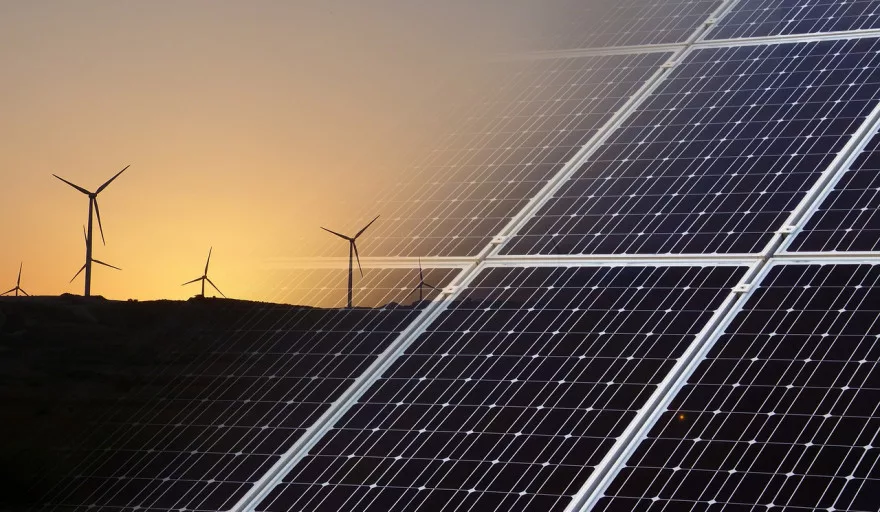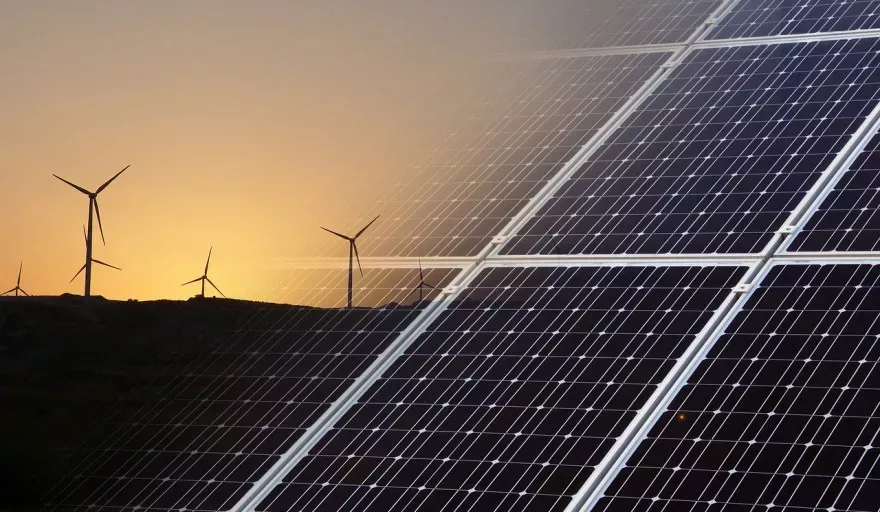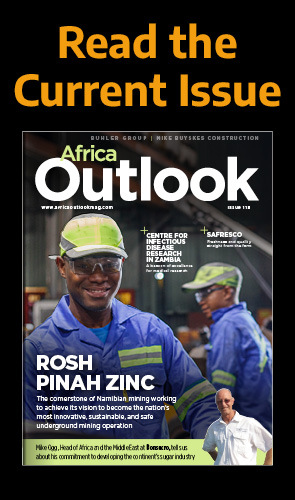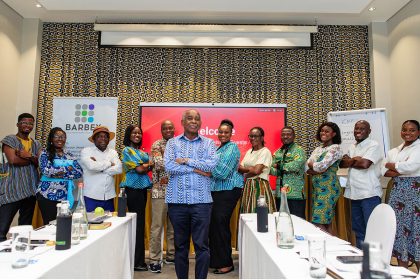
Africa needs to double its output of electricity by 2030 if it is to keep up with demand.
Economic growth, changing lifestyles and a growing population are all placing strain on the continent’s electricity grid, and according to research conducted by global legal firm DWF, renewables is set to play a huge part in the future.
Christian Hellmund, Partner in Energy and Renewables, recently co-wrote the DWF report What’s holding Africa back? Delivering renewable energy in a challenging market. Here he answers our questions on the research and his thoughts on the industry’s potential.
Africa Outlook (AfO): Why does Africa present an exciting prospect for investment in renewable energy?
Christian Hellmund (CH): Currently, over 640 million Africans have no access to electricity. Not only is there a huge electricity supply deficit but also an enormous scale of demand for energy. Due to economic development and democratisation in the region, the domestic and industrial demand for power has vastly increased, and the current levels of investment lag far behind these fast-growing needs. And these needs are only set to intensify, with the International Energy Agency predicting that the demand for electricity in sub-Saharan Africa will increase by 4.6 percent annually.
Africa is also arguably the most vulnerable continent to the impacts of global warming and so needs to consider how it will address climate change in the future. All 54 African Union countries have already come together to promote the Paris accord, demonstrating a fundamental commitment to a renewable future. The African markets are also rich in the natural resources needed to produce renewable energy. Additionally, innovations in raising finance are creating new and exciting opportunities for developers and investors, meaning that renewable projects are now competitive with conventional projects.
AfO: I see you have identified four key challenges in your research. What, for you, is the single biggest challenge facing Africa and its implementation of renewable energy?
CH: While the political environments in African countries will continue to be highly influential in site selection, it is in the financing and bankability of projects where the biggest challenge lies.
There is a mismatch between the number of developers who need funding and the number of funders who need projects. Developers rely on equity and grants for early-stage project funding and are desperate for investors to get involved earlier in the process. Often, investors have a lot of money to deploy for a project but are not willing to put funds into the development of the project due to the small size of the investment and the high risks and possibility of low returns involved with any venture in emerging markets. Developing projects in Africa can take up to ten years and subsequently developers often run out of financing before securing long-term investment.
AfO: Briefly outline the other three challenge areas.
CH: The other challenge areas are site selection, feasibility and planning; construction and commissioning; and distribution and technology.
Finding a stable and supportive political environment is the most important factor to consider when selecting a location to invest in such projects. Getting this right has a significant influence on the success of renewable energy projects in Africa. The potential impact of an electoral cycle on the momentum, stability and ongoing security of a development is immense. Sound fundamentals should be sought when selecting a project location: a positive business environment, good transport, adequate grid infrastructure and stable and secure off-takers.
Risks at the construction stage are relatively limited and manageable because once a project is financed, technical on-the-ground risks are relatively minor. This is assuming the right people are in place with the necessary skills, commitment and project management experience.
The African grid infrastructure is often poor and there is little that can be done to improve it once a project is in progress. This risk must be mitigated at the due diligence and financing stages.
AfO: How can investors and organisations overcome these challenges? What general advice would you give?
CH: The African market holds different complexities so identifying effective local partners is essential to navigating these. I would advise that developers network extensively through existing contacts and visit regional events to build local business and political relationships.
Projects also have a greater chance of getting off the ground if developers have access to funds at an early stage. Financial aggregators provide opportunities to achieve a project size and reduction of risk that encourages investors who would not consider individual projects. Decentralised crowdfunding also provides new sources of funding for smaller and riskier projects. Blockchain peer to peer technology enables crowdfunding innovations and also provides the potential for African renewables projects to utilise innovative energy management and supply models. Developers need to make the social and community impact of the project attractive to government and investors.
Developers should also allow generous time contingencies in the construction schedule as it will inevitably take longer than planned. In relation to distribution and technologies, grid operators should be consulted at an early stage to help avoid problems.
AfO: What technologies have you identified as crucial to the development of the sector?
CH: Battery storage technology will be vital – the technology has already significantly improved, and costs are coming down. This is enabling renewable energy companies to partner with advanced technologies to offer 24-seven solutions. The improved price and reliability of these storage solutions also increases the opportunities for commercial, industrial and grid backup applications.
New storage technology providers may enhance the feasibility and flexibility of renewable energy projects. There will be a role for battery storage retrofitted to utility scale wind and solar projects in the future, when the costs come down. Forward-looking companies are adopting an active strategy of acquiring projects now, with the intention of adding storage technology in the future.
But, until energy storage is widely used at a commercially attractive price point, the intermittent nature of most renewables means that other energy sources will continue to be used to provide a reliable baseload power. Realistically, we are years away from completely self-sufficient, large-scale, battery based renewable projects.
I also believe that blockchain is another exciting technology with the power to transform this sector, particularly as an exciting new crowdfunding model. Blockchain uses distributed ledgers rather than a central database to store information. Because the records are distributed, the information is far less vulnerable to hacking so it provides a relatively safe ledger of any form of economic transaction. It also creates new opportunities in peer-to-peer energy transactions, such as allowing projects to be split into shares and treated as tradeable assets that can change hands often and fast, as opposed to long-term investments.
Any transaction that had previously required third party validation and security has the potential for blockchain to step in. For example, the management and supply of energy provision can be decentralised. The Sun Exchange, based in South Africa, is a great example of this: it enables users to buy and earn rental income from solar panels on commercial rooftop space by feeding surplus energy into the grid.
Blockchain can also be used for managing payments and implementing ‘smart contracts’ that can be set to execute automatically based on transaction data. This fast-growing technology provides further potential for African renewable projects to ‘leapfrog’ conventional infrastructures, and invest directly in innovative and flexible decentralised energy management and supply models.
AfO: Are you optimistic about the future of renewable energy in Africa? What do you expect to see in five to 10 years’ time?
CH: Despite the significant challenges, I think there are plenty of reasons to be optimistic about the future of renewable energy projects in Africa. As technologies become more efficient and widely adopted, the production cost is falling rapidly so global investment in renewable energy becomes more and more attractive.
The next big political change in Africa will be vast improvements in state bureaucracy and governance. Private sector investment is currently picking up the gaps in essential energy services; and this will continue as governance improves because of the pressure from the big demand for energy.
The demand for electricity in Africa will increase and by 2030 demand will reach more than double the current electricity production. New energy sources will be needed, and it is my belief that renewable energy projects can help to satisfy this increasing demand.
In five to 10 years, I expect to see a lot of renewable energy projects in the pipeline throughout Africa. I predict these will be financed by new financial models, like crowdfunding, project aggregation and blockchain technology. Such models are crucial in closing the funding gap between investors and developers.






























